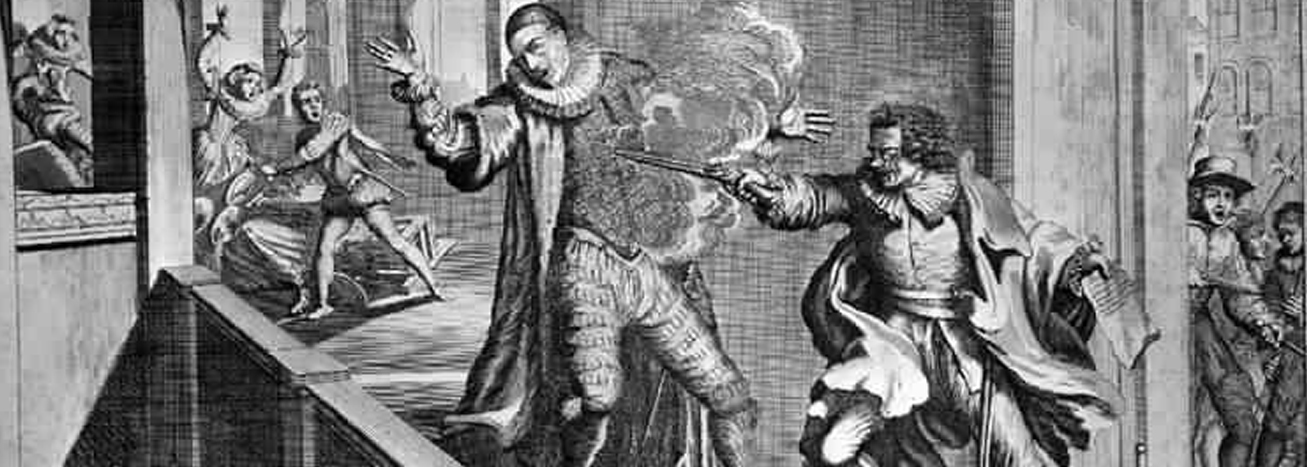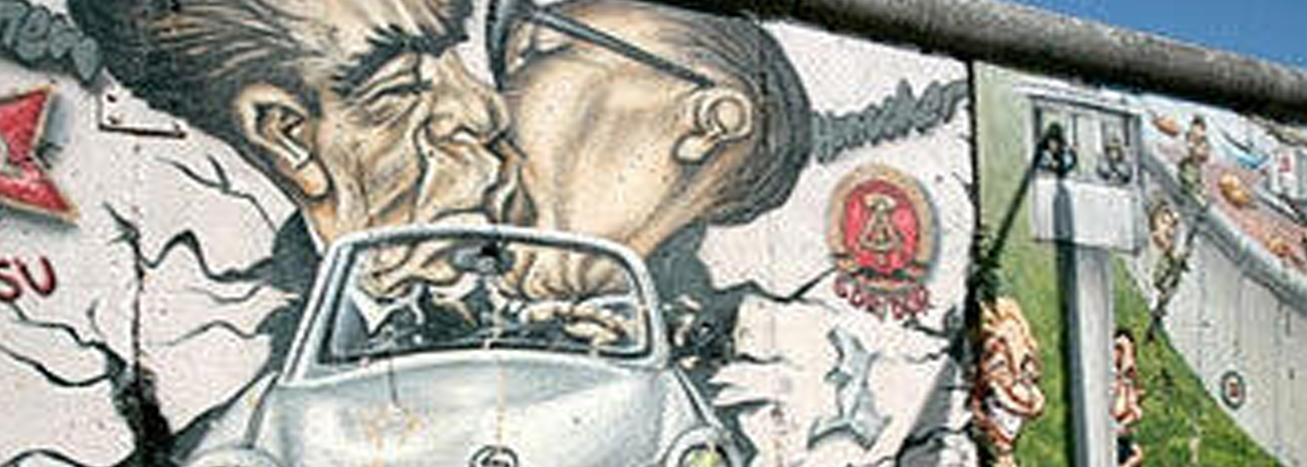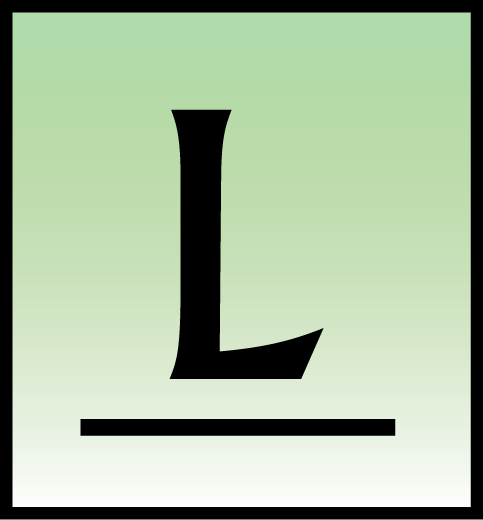
Lesmateriaal
A postcard from Westerbork
Some years ago a postcard was found that
was send form the concentration camp Westerbork to the Jewish
Council in Tilburg. Teachers can use this postcard and the story
behind it to introduce students to the nazi-regime and the fate
of the Jewish people.
Rubrieken
- Prehistorie
- Oudheid
- Middeleeuwen
- 1500-1900
- Twintigste Eeuw
- Staatsinrichting
Lesmateriaal op Periode
- Tijdvak 1
- Tijdvak 2
- Tijdvak 3
- Tijdvak 4
- Tijdvak 5
- Tijdvak 6
- Tijdvak 7
- Tijdvak 8
- Tijdvak 9
- Tijdvak 10
Lesmateriaal op Tijdvak
- Algemeen
- Basisonderwijs
- Brugklas
- Klas twee
- Klas drie
- Tweede Fase
- Toetsopdrachten
- Staatsinrichting
Lesmateriaal op Tijdvak
Links
A postcard from Westerbork
A few years ago this postcard from Westerbork was found.
On the address side of the card was:
On the Jewish Council Tilburg
S. Kniberg, Westerborg, BAR.71
And on the back:
30-9-'43 Thank you for the package S.Kniberg
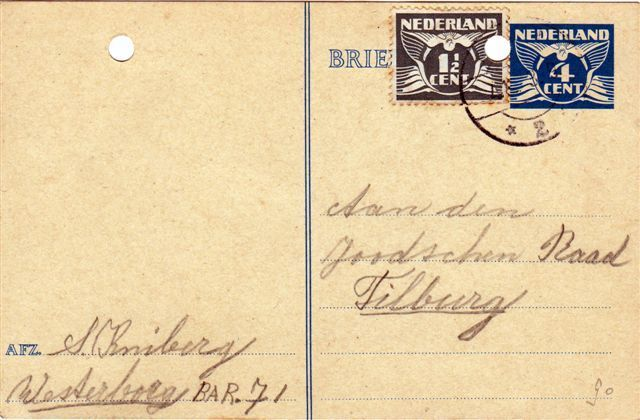
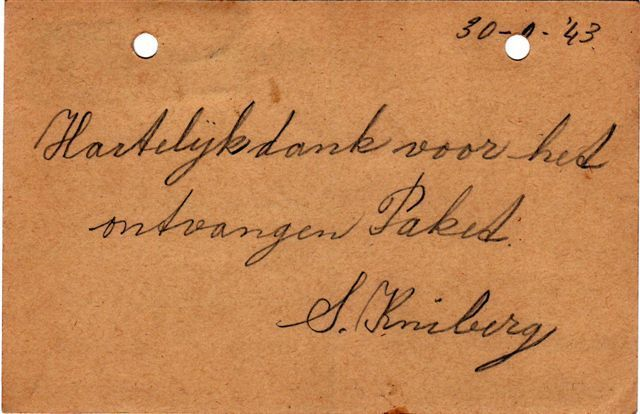
Siegmund Kni(e)berg
On September 30, 1943 one S. Kniberg
sent a postcard from Westerbork to the Jewish Council in Tilburg
on which he thanked the Council for a package . What was in the
package is not mentioned.
With the help of registers in Israel it became clear that the
sender was Siegmund Kni(e)berg. He was born in 1923 in Hamborn
(Duisburg). The Jewish Kni(e)berg family were originally from
Poland, father Berek father from Warsaw and mother Chana from
Kaluszyn.
Soon after the coming to power of Hitler the antisemitic nature
of the Nazi regime became clear and the Knieberg family (Berek,
Chana and three children Siegmund (1923 ), brother Leo (1931)
and sister Clara (1927) fled in 1933 to Nieuwenhagen in Limburg
. They rented an upstairs apartment at the Hereweg. Father
Knieberg maintained his family by selling textile at people's '
houses.
In 1942 the family was arrested and transported to camp Vught
and later to Sobibor. Siegmund and Clara initially escaped
deportation. Siegmund, because he worked in the so-called
Philips Command (Philips commando). Sister Clara because she
was, thanks to GP Van der Eerden, 'sick' in hospital the moment
the family was transferred to Vught. Afterwards she was
transferred to the family farm of farmer Spierts in
Spekholzerheide. But here she wasn't safe eighter. The Germans
tracked her down and put her on transport to Auschwitz. Here she
was confronted with the infamous camp doctor Joseph Mengele.
Siegmund was transferred to Westerbork and put on transport to
Sobibor.
| Nineteen trains to
Sobibor In 1943, nineteen trains left Westerbork for Sobibor. More than 34,000 men, women and children from the Netherlands were forced to travel to this unfamiliar place in eastern Poland. With few exceptions, they were all killed within less than five months. Of the nineteen transports only fifteen women and three men survived the war.  |
On arrival in Sobibor father Berek (49 years), mother Chana
Ruchla Knieberg-Polawski (47 years) and their son Leo were
gassed on May 28, 1943. The 19-year-old Siegmund was found
'arbeitsfähig' (capable of working) and managed to survive,
despite all the horrors and hardships.
After the liberation Siegmund and Clara Knieberg settled in
Heerlen, because in that city was their old synagogue. At the
railway-crossing on the Willemsstraat they started a small shop.
Clara married a Jewish man from Austria who had survived
Mauthausen and went to the United States. Siegmund (Sidney)
wanted to stay close to his sister and also settled in America.
There he met a jewish girl from Antwerp, whom he married. The
couple went to a place near Los Angeles.
Monument
In August 1989 Siegmund received a letter, which stated that a
street would be named after his family and that a memorial would
be unveiled. Siegmund showed through his wife that he
emotionally could not handle the ceremony. Clara Knieberg wanted
to attend the ceremony.
The monument was unveiled on September 19, 1990 by Clara
Beim-Knieberg, in the presence of the mayor and aldermen and
hundreds of interested people, including Clara's friend in
Auschwitz and the doctor who saved Clara initially from
deportation. After the unveiling Clara planted a tree with her
husband.
The Jewish Council in Tilburg
The Jewish Council was established in February 1941. They had to
control the Jewish community in the Netherlands. It was founded
as the "Jew Council for Amsterdam", but soon got the authority
over all the Jews of the Netherlands. Through this council the
occupier gave orders to the Jewish community and its leaders and
thus became the 'hatch' for the anti-Jewish measures of the
German occupier. In September 1943, the leadership of the Jewish
Council was deported to the concentration camp Westerbork and,
de facto, ceased to exist.
To our knowledge, the Jewish Council in Tilburg started in the
summer of 1942 and was located in the home of the Jewish family
Lewin in the Telefoonstraat (Telephonestreet). Like the family
Knieberg the family of Heinz Lewin and Erna ( two daughters and
a son ) had left Germany in the thirties . They first settled in
Breda, but then moved to Tilburg. Father Heinz fled to France in
1940, where he was arrested . He died in April 1945, just before
the end of the war at Mauthausen.
On August 28, 1942, the day of the first large-scale deportation
of Jews, Erna found a safehouse with her three children. They
survived the war.
The Jewish Council was abolished the following year, in Tilburg
on September 29, 1943, one day before the postcard was sent by
Siegmund Knieberg to Tilburg.
Why the postcard was sent by Siegmund Knieberg, who himself was
from Limburg, to the Jewish Council in Tilburg, is unknown.
Siegmund possible sent the card on behalf of a resident of that
city.
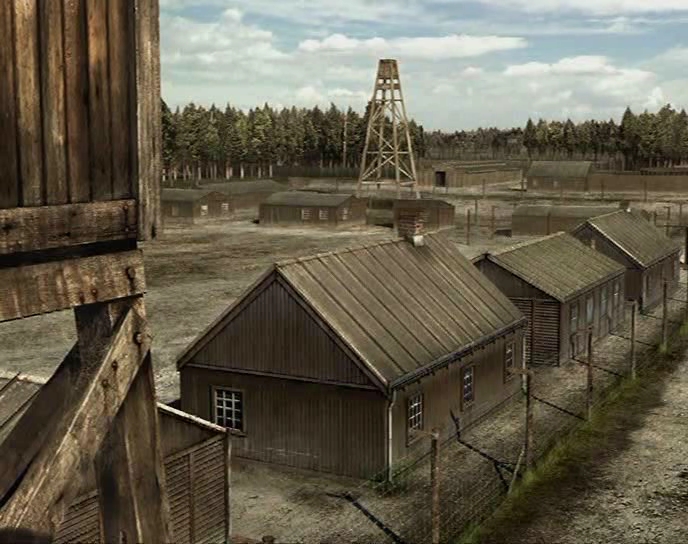
Concentrationcamp Sobibor
References
* http://www.geheugenvantilburg.nl/verhalen/lees/14272/briefkaart-uit-westerbork
* http://oorlogsbronnen.nl/zoekresultaat?n_o_m=pager&year=1990&day=19&list=1&page=2&view=record



